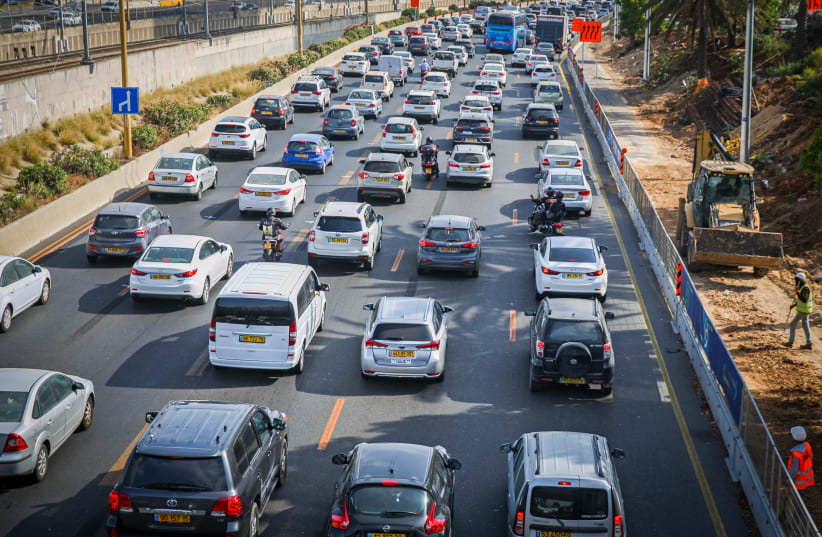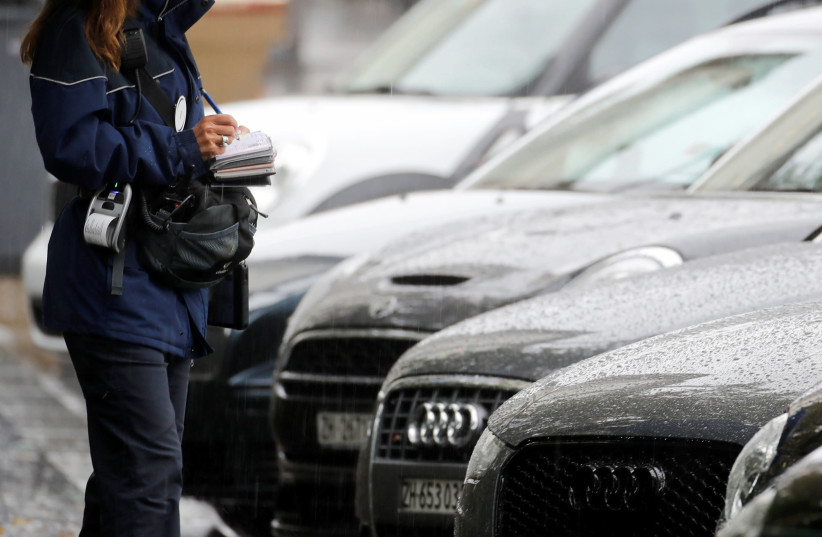Road signs, markings and designated colors make up the common language of the road. It is clear to everyone that sign with the hand on it is not instructing you to wave goodbye, the round sign with the number tells you the speed limit and the green light means go. The same is true of the colors of sidewalks in cities. Parking is allowed by gray curbs, on blue and white it is allowed under the parking guidelines and for a fee, and if you park in red and white, you may find a note from the municipality on your windshield.
Despite these agreed-upon signs, many residents of Ramat Hasharon were confused when the city's most central and busiest Sokolov and Usishkin streets, which are also its main commercial streets, were painted red and white overnight by the municipality, making it seemingly forbidden to park there. Moreover, in some places, the painting was sloppy so that the street sidewalks presented a unique pattern of blue-white-red, perhaps as a tribute to the French flag.
Confusing signage
Although there was a sign at the beginning of the street explaining that, in these areas, parking was permitted for up to two hours, the situation was a stumper for anyone who missed the sign. Even for those who did notice the sign, it was not very easy to understand. It said that parking is limited to 120 minutes, valid Sunday-Thursday from 9:00 a.m. to 7:00 p.m. and on Fridays from 9:00 a.m. to 2:00 p.m. But given the red-white painting of the curb, it is not clear what the parking rules are outside the given hours. Do residents get free parking or a parking ticket?
In essence, the transition to more red-and-white parking areas is a positive thing. City parking is in short supply and high demand; limiting the space and time people can park in is a logical move in order to make the streets useful and accessible for as many people as possible.
To catch a parking-lurker
What is more, the enforcement of parking laws by identifying license plates on security cameras should prevent, or at least significantly reduce, the chance of people gaming the system by moving their car at the end of two hours and parking it nearby to reset the timer.
However, not all loopholes can be blocked. Someone who parks their car a little after 5:00 p.m. can take advantage of the two hours allowed and then leave the vehicle in the parking lot for the rest of the night since the time limit ends at 7:00 p.m.
In addition, residents are concerned, despite the benefits to the city. Some are dissatisfied because the new arrangement allows only one space for some residencies which may have multiple cars. Others expressed concern that the parking restrictions on the main streets would cause parking congestion to spill over onto their blocks.
The two hours of free parking on main streets do come to benefit shop owners and allow shoppers to park quickly and continue with their day. For a long time, Sokolov and Usishkin streets were full of double-parked cars, making them next to impossible to navigate.
The municipality's position is that with the appropriate signage, including red and white markings, as well as using security cameras, it will be possible to enforce the "two-hour law". The municipality will also continue to monitor the transition and examine whether it will be necessary to take additional steps to clarify the issue.

